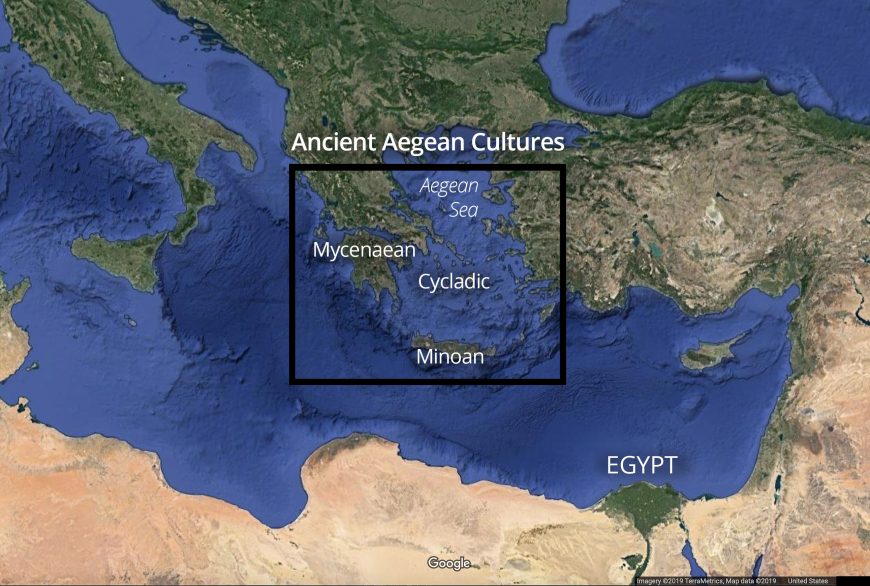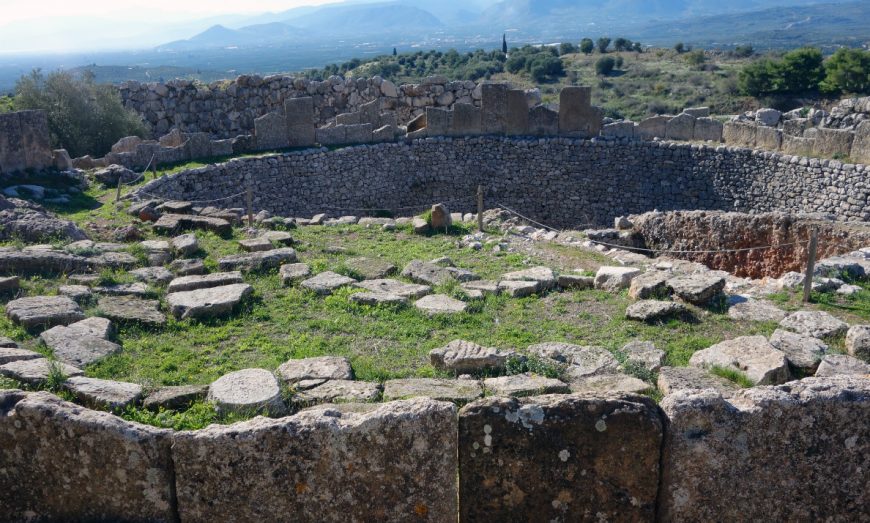The Aegean refers to the Aegean Sea, the northern portion of the Mediterranean between Greece and Turkey and extending south to the island of Crete. In art history this designation refers to the era of the Bronze Age, the 3rd and 2nd millennium B.C.E. This era encompasses three different but inter-related cultures:
- the Cycladic islands (c. 3000 BCE-1600 BCE)
- the Minoans of Crete (c. 1900 BCE-1375 BCE)
- the Mycenaeans of the mainland of Greece (c. 1600 BCE-1100 BCE)
By the end of this module you will be able to:
- Identify and describe the form, content, and context of key works of Aegean art
- Define the critical terms related to Aegean art
- Explain the similarities and differences of art by the three Bronze Age Aegean cultures
- Describe the materials and techniques of Aegean Art
Relative to many ancient cultures, those of the Aegean were only recently discovered, at the end of the 19th century. The Classical Greeks and Romans never faded from memory but the Mycenaeans and Minoans were largely forgotten, except in myth; it is the people and places of Bronze Age Crete and Greece featured in the Iliad and Odyssey of Homer.
Two archaeologists who set out to find the people mentioned in Homer’s epics, Heinrich Schliemann and Sir Arthur Evans, had little more than the poems themselves and some obscure remains to lead them. Schliemann dug several Aegean Bronze Age sites, most famously Troy from 1870–73, and Mycenae (the mythical house of Atreus, best known from the tragic play the Oresteia of Aeschylus) in 1876. In 1900, Evans, following the first explorations of the site by Minos Kalokairinos in 1877, began to fully uncover Knossos, the site associated with the mythical palace of King Nestor of Crete.




